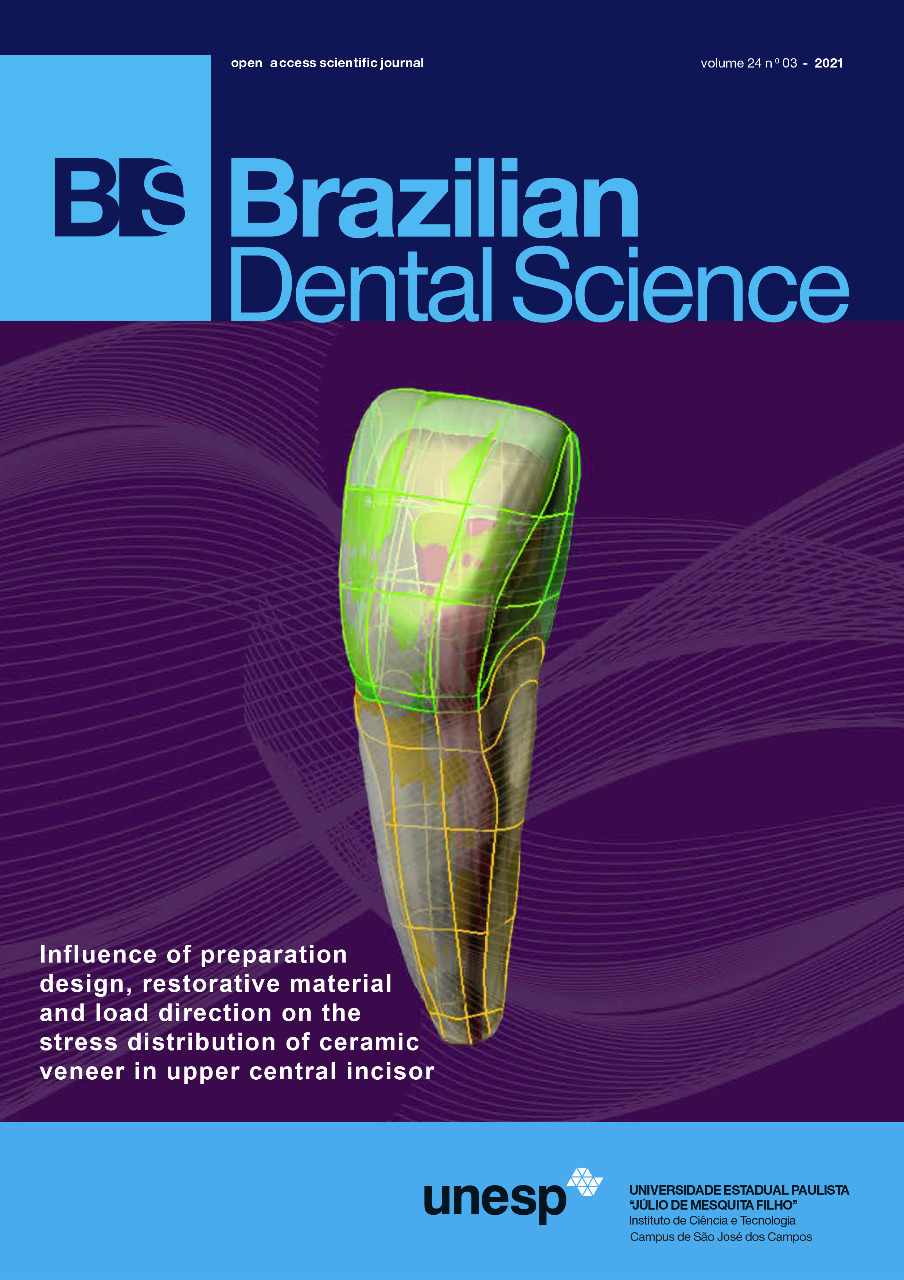Mechanical and thermal stress analysis of hybrid ceramic and lithium disilicate based ceramic CAD-CAM inlays using 3-D finite element analysis
DOI:
https://doi.org/10.14295/bds.2021.v24i3.2453Resumo
Objectives: The aim of this study was to analyze mechanical and thermal stresses of hybrid ceramic and lithium disilicate based ceramic of CAD/CAM inlays using 3D Finite element analysis. Material and Methods: A three dimensions finite element model of permanent maxillary premolar designed according to standard anatomy with class II cavity preparation for inlay restored with two different ceramic materials:- 1- Hybrid ceramic (Vita Enamic), 2- Lithium disilicate based ceramic (IPS e.max CAD). Totally six runs were performed on the model as: One loading case for each restorative material was tested in stress analysis; seven points of loading with 140N vertically applied at palatal cusp tip and cusp slop, marginal ridges and central fossa while the models base was fixed as a boundary condition in the two cases. Two thermal analysis cases were performed for each restoration material by applying 5ºC and 55ºC on the crown surface including the restoration surface. Results: The results of all structures were separated from the rest of the model to analyze the magnitude of stress in each component. For each group, maximum stresses on restorative materials, cement, enamel, and dentin were evaluated separately. Both ceramic materials generated similar stress distribution patterns for all groups when a total occlusal load of 140 N was applied. Conclusion: Thermal fluctuations of temperature have a great influence on the stresses induced on both restoration and tooth structure. IPS e.max CAD produced more favorable stresses on the tooth structure than Vita Enamic.
KEYWORDS
Ceramics; Finite element analysis; IPS e.max CAD; Lithium disilicate; Vita Enamic.
Downloads
Downloads
Publicado
Versões
- 2021-07-01 (3)
- 2021-07-01 (2)
Como Citar
Edição
Seção
Licença
TRANSFERÊNCIA DE DIREITOS AUTORAIS E DECLARAÇÃO DE RESPONSABILIDADE
Toda a propriedade de direitos autorais do artigo "____________________________________________________________________" é transferido do autor(es) para a CIÊNCIA ODONTOLÓGICA BRASILEIRA, no caso do trabalho ser publicado. O artigo não foi publicado em outro lugar e não foi submetido simultaneamente para publicação em outra revista.
Vimos por meio deste, atestar que trabalho é original e não apresenta dados manipulados, fraude ou plágio. Fizemos contribuição científica significativa para o estudo e estamos cientes dos dados apresentados e de acordo com a versão final do artigo. Assumimos total responsabilidade pelos aspectos éticos do estudo.
Este texto deve ser impresso e assinado por todos os autores. A versão digitalizada deverá ser apresentada como arquivo suplementar durante o processo de submissão.




























